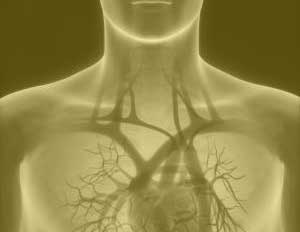- Home
- Editorial
- News
- Practice Guidelines
- Anesthesiology Guidelines
- Cancer Guidelines
- Cardiac Sciences Guidelines
- Critical Care Guidelines
- Dentistry Guidelines
- Dermatology Guidelines
- Diabetes and Endo Guidelines
- Diagnostics Guidelines
- ENT Guidelines
- Featured Practice Guidelines
- Gastroenterology Guidelines
- Geriatrics Guidelines
- Medicine Guidelines
- Nephrology Guidelines
- Neurosciences Guidelines
- Obs and Gynae Guidelines
- Ophthalmology Guidelines
- Orthopaedics Guidelines
- Paediatrics Guidelines
- Psychiatry Guidelines
- Pulmonology Guidelines
- Radiology Guidelines
- Surgery Guidelines
- Urology Guidelines
Carotid artery imaging better predicts an initial cardiovascular event than Coronary artery imaging: Study

Coronary artery disease (CAD) remains one of the leading causes of death and morbidity worldwide. Carotid Artery Imaging and Coronary Artery Imaging both modalities are used to predict atherosclerotic cardiovascular disease. A recent study has revealed that carotid artery imaging more strongly predicts Atherosclerotic Cardiovascular Disease Score (ACDS) than Coronary Artery Imaging. The findings were published in the Journal of Computer-Assisted Tomography.
The aim of this study was to compare coronary and carotid artery imaging and determine which one shows the strongest association with atherosclerotic cardiovascular disease (ASCVD) score.
Read also: Carotid artery MRI improves risk assessment for cardiovascular disease
Cardiovascular diseases (CVDs) are the medical conditions affecting heart, blood or blood vessels. In clinical medicine, coronary artery disease, carotid artery disease, and peripheral vascular disease are common manifestations of CVDs. Carotid artery stenosis (CAS), where the atherosclerotic plaque is formed because of response to physical or metabolic injury, may cause a debilitating stroke; hence, its early detection, prevention, and treatment are important.
Two separate series of patients who underwent either coronary computed tomography angiography (CTA) or carotid CTA were included. We recorded the ASCVD scores and assessed CTA imaging. Two-thirds were used to build predictive models, and the remaining one third generated predicted ASCVD scores. The Bland-Altman analysis analyzed the concordance.
A total of 110 patients were included in each group. There was no significant difference between clinical characteristics. Three imaging variables were included in the carotid model. Two coronary models (presence of calcium or Agatston score) were created.
Read also: Carotid ultrasound — an important tool to predict cardiovascular risk in psoriatic patients
The results of the study made the authors conclude, Both carotid and coronary artery imaging features can predict ASCVD score. The carotid artery was more associated with the ASCVD score than the coronary artery.
For more details, click on the link
doi: 10.1097/RCT.0000000000000920

Disclaimer: This site is primarily intended for healthcare professionals. Any content/information on this website does not replace the advice of medical and/or health professionals and should not be construed as medical/diagnostic advice/endorsement or prescription. Use of this site is subject to our terms of use, privacy policy, advertisement policy. © 2020 Minerva Medical Treatment Pvt Ltd